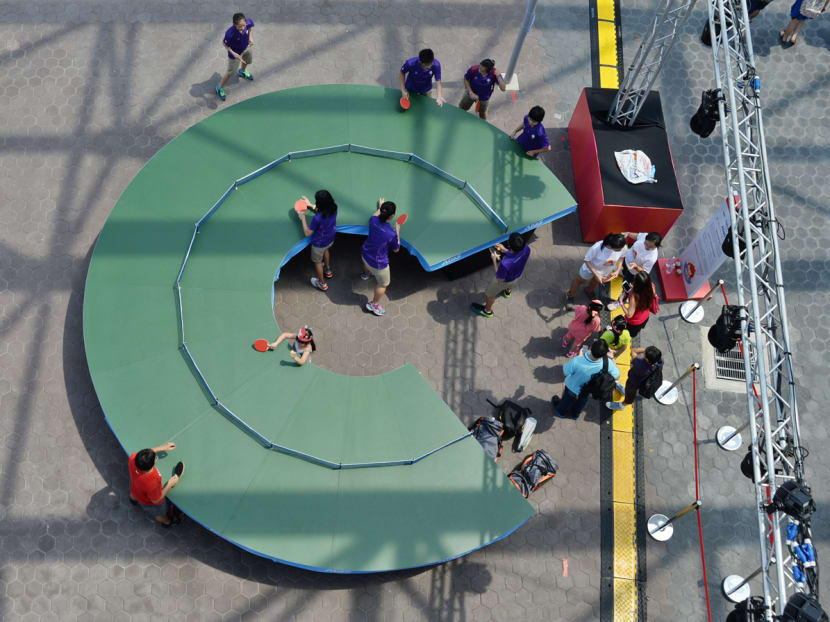Call for discourse on IP, artistic practices
We refer to the report “Quirky ping pong table at SEA Games carnival resembles work by Singaporean artist” (June 5, online), about the horseshoe-shaped table installed at the Sports Hub that resembles Cultural Medallion winner Lee Wen’s artwork Ping-Pong Go Round.

The horseshoe-shaped table at the Sports Hub that resembles artist Lee Wen’s Ping-Pong Go Round. Photo: Robin Choo
We refer to the report “Quirky ping pong table at SEA Games carnival resembles work by Singaporean artist” (June 5, online), about the horseshoe-shaped table installed at the Sports Hub that resembles Cultural Medallion winner Lee Wen’s artwork Ping-Pong Go Round.
He has stated that he was not informed or given credit for the idea. The SEA Games Organising Committee has claimed that there was no intention to infringe on any rights and that a vendor who was unaware of the similarity had proposed the activity.
Mr Lee has clarified, however, that a proposal to exhibit this artwork in front of the Sports Hub was submitted last year to the office of the Culture, Community and Youth Minister and to the Sports Hub.
The minister’s office confirmed receipt of this proposal. Furthermore, since 1998, this installation has toured around the world.
We understand the installation has since been dismantled and discussions are ongoing between all relevant parties. We hope an amicable outcome can be reached, so Mr Lee’s art can continue to engage the public.
This is a good example of how art can enliven spaces and help strangers connect with one another in fun, imaginative ways. Such projects illustrate the possibilities art can bring to make Singapore a more attractive place and should be encouraged.
It is troubling, however, that due consideration and acknowledgement were not initially given to the artist. We are also concerned that some intellectual property (IP) lawyers feel no copyright was infringed.
This incident highlights the insufficient measures to respect and protect artistic creation in Singapore. In a nation ranked consistently in international surveys as having one of the best IP protection laws, why did this occur? Even if it was legal, is it ethical?
It raises questions about the environment for original content creation here — a key output desired by national policies that have been calling for Singapore to become a knowledge economy powered by creativity and entrepreneurship.
Given its importance, we feel more can be done to encourage, respect and protect content creation. The Government has made tremendous efforts in growing and professionalising the arts.
Unfortunately, limited understanding of artists’ rights and standard industry practices remains.
Capability development and nurturing a culture of creativity means artists should be given recognition and reward for the time and effort they spend on proposing and creating artworks, with the assurance that their ideas and creations are protected from plagiarism.
We hope this incident will inspire more discussion on IP in the arts, and concrete steps can be taken towards according clearer IP protection for arts and cultural workers.
This letter carries 229 signatures.






